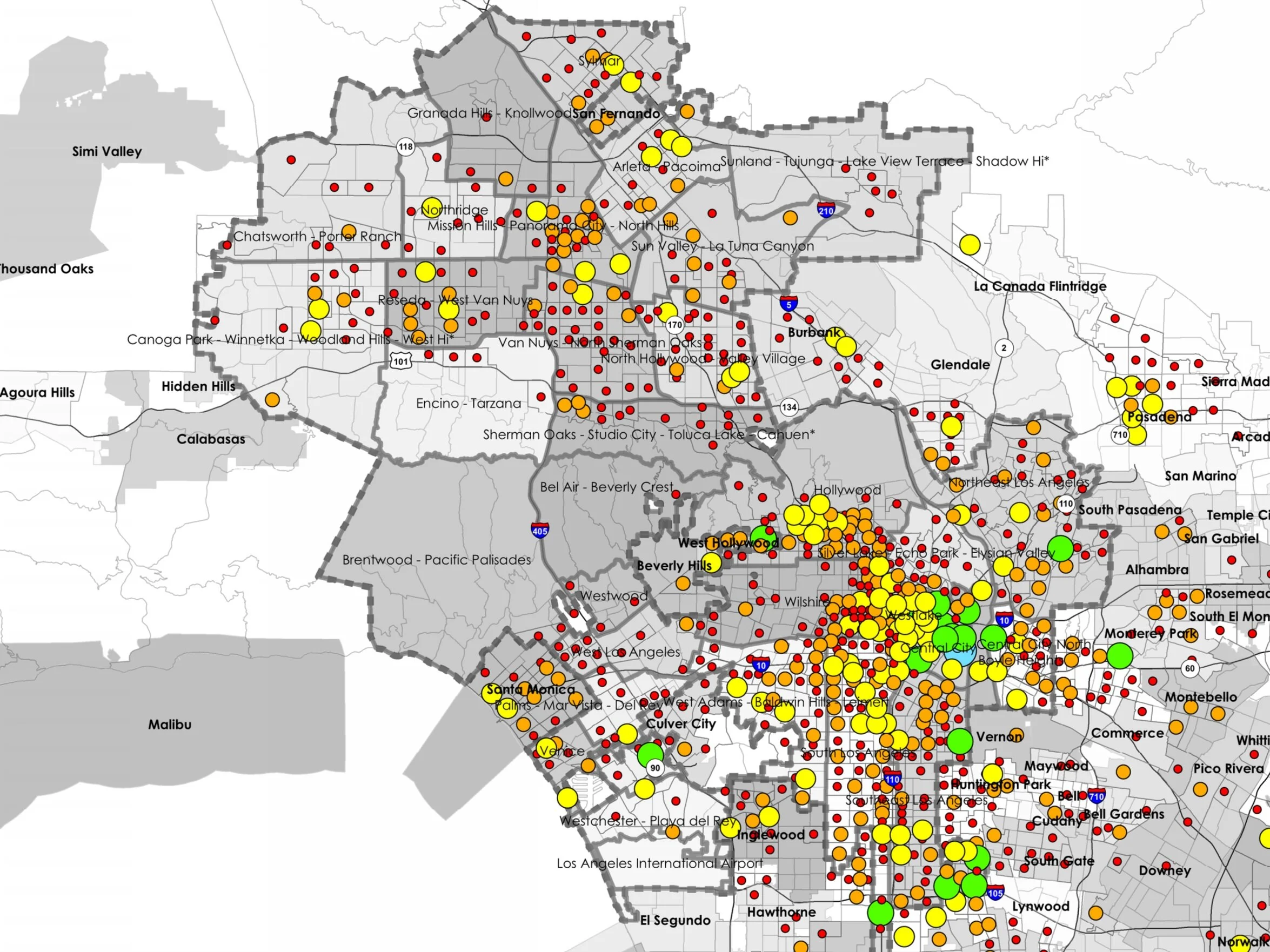The data presented in the Center’s research and publications are sourced from several publicly available datasets and supplemented by interviews and public comments where appropriate. This publication is a compilation of publications and presentations recently conducted by the Center for the purposes of advancing the five main objectives, as well as citations for the datasets used.
Read MoreThe Center for Pacific Urbanism collaborates with members of Historic Venice and the Oakwood community to further efforts of self-determination through analyses of US Census Bureau and Office of the Tax Assessor data, an inventory of housing stock by decade and building type, Zoning trends, and alternative scenario development. The normative state as defined by the community is the guiding principle, the rest is history.
Read MoreA summary of several historical trends including housing affordability, homelessness, census data, housing stock, dwelling unit production, downzoning, commuter trends, and economic profiles for the Venice Neighborhood Council and City of Los Angeles Council District 11
Read MoreLos Angeles has a housing affordability crisis due in large part to a lack of supply that is five to six decades in the making. The root causes in Los Angeles include suppressed housing supply rates due to inequitable urban planning and exclusionary zoning, such as downzoning, inadequate policies or enforcement, rising construction and development costs, a financial structure favoring nonresidential development, and insufficient funding for subsidized low income housing.
The big planning question with which we have been grappling is whether any zoning changes are either necessary, or more conducive to, accomplishing the 8 year targeted increase in housing supply, and if so, what specific zoning changes are these?
Read MoreToday, housing production in Los Angeles overall is eight times less than what it ought to be in order to bridge the housing shortage. Affordable housing production is less than a twentieth of the necessary supply rate to make up for over half a century of inequitable housing policies. While fiscal resources are being expended and depleted at unsustainable rates, the cost of housing continues to rise and the number of households falling into homelessness continues to increase
Read MoreThe Mello Act sets requirements for the demolition, conversion and construction of housing in the Coastal Zone and applies to the Coastal Zone throughout the entire state of California. The primary objective of this paper is to evaluate what the impacts of changes to the Mello Act would be within the Coastal Zone in the City of Los Angeles.
Read MoreAs Los Angeles continues to face a worsening housing scarcity and unaffordability crisis, we must determine and implement policies that will help our neighbors avoid homelessness by providing adequate shelter and housing both in the immediate as well as permanently. This study provides a comprehensive list of potential sites for off-street homeless shelters in Los Angeles as well as an inventory of precedents from various cities that should be considered by local policymakers in addressing homelessness in our communities.
Read MoreDownzoning is the practice of reducing an area’s dwelling unit capacity, whether by forbidding or limiting multiple-family dwellings, or through restrictive regulations, such as increased parking requirements, larger minimum lot sizes and building setbacks.
Read MoreEvery eight years, a housing production target is determined for the City of Los Angeles by the Southern California Association of Governments (SCAG) in their Regional Housing Needs Assessment (RHNA). For the upcoming 2021-2029 cycle, Pacific Urbanism has further determined the production targets for each of the City's thirty-five Community Plan Areas through the FAIR Plan housing allocation index.
Read MoreLand use and zoning policies are restricting the construction of dwelling units in the City of Los Angeles. As a result, housing production in Los Angeles has failed to provide sufficient dwelling units to accommodate the city’s population growth. Certain areas of the city have even experienced a net loss of dwelling units, further exacerbating the problem.
Read MoreHousing production in Los Angeles has become a topic of vigorous public discussion as a housing crisis continues to affect residents across the region. This study helps identify where land use policy is lacking or failing in providing adequate housing for Angelenos.
Read More









